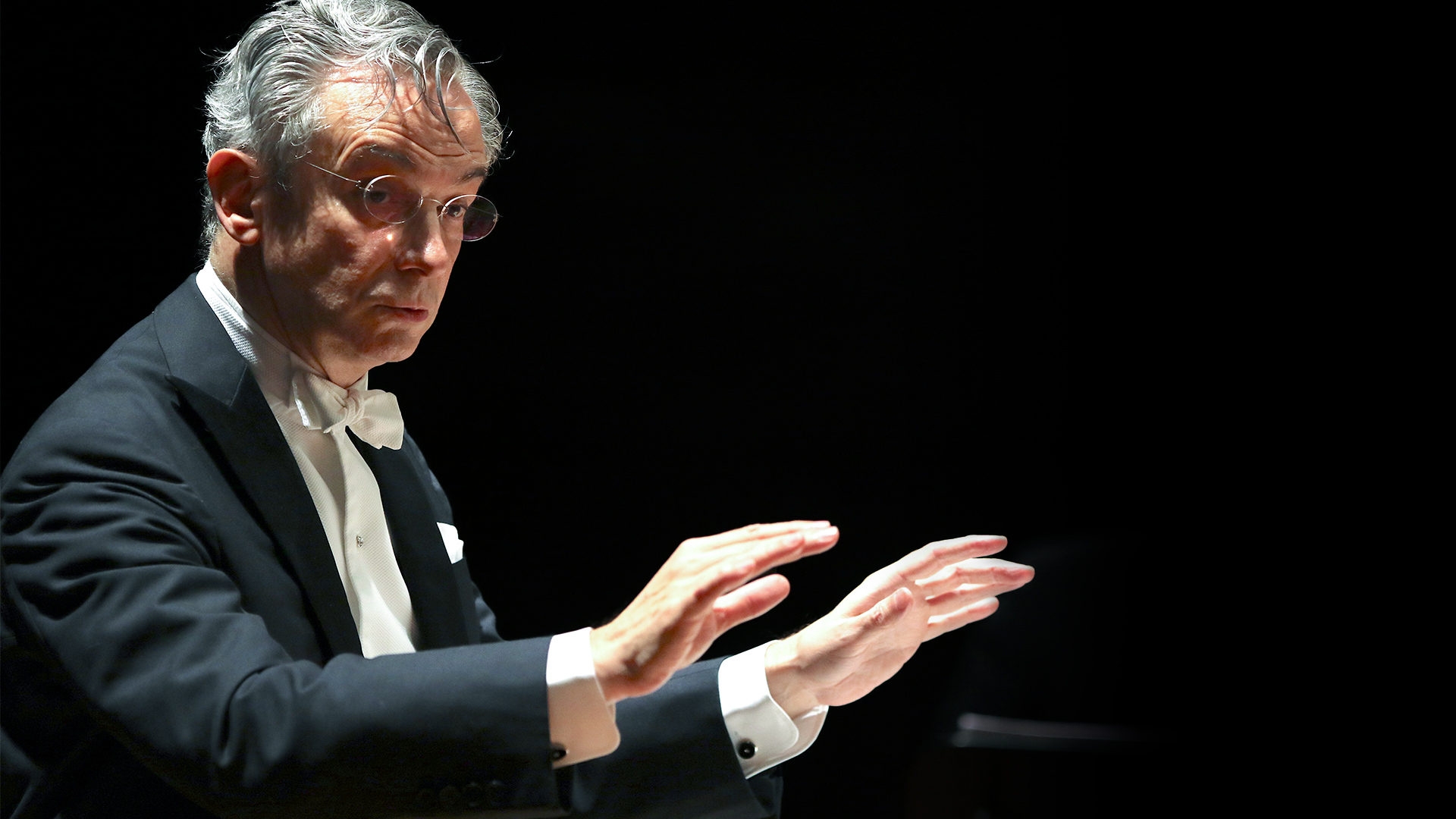ARNOLD SCHÖNBERG
Concert for piano and orchestra op. 42
GUSTAV MAHLER
Symphony n. Symphony n. 5 in C sharp minor
Piano
Alessandro Taverna
Conductor
Fabio Luisi
Opera Carlo Felice Genova Orchestra
The Schönberg of the first American decade (1933-1942) is a composer that, though claiming the avant-garde which he was creator of (introducing the atonal and then serial technique), leans towards a introspective look. In particular, clear traces of his first steps can be found in the first American operas – such as the Concert for violin, the Suite for strings orchestra, theOde to Napoleone – when he debuted in Vienna, a city where it still echoed the late-Romantic Mahler, Schreker and a young Strauss. Naturally, such features can be found in the Concert for piano and orchestra op.42, written in 1942, rich in language though fluid in its pace, christened by Leopold Stokowsky in New York on February 6, 1944 with Eduard Steuermann as soloist.
The dodecaphonic series which the opera is based on is conceived to create a harmonic fabric recalling the tonal system, at times explicitely. The result is an expressive journey that Schönberg, despite its refusal to print the words n the score, described as follows: «Life was so easy (Andante) – but suddenly hate burst (Molto allegro) –, creating a dire situation (Adagio) – nevertheless, life goes on (Giocoso). Such an “emotional” journey can naturally be seen, perceived and interpreted in different ways; what is certain is the variety of combinations performed between the soloist and the orchestra, the elegance of an clear and essential orchestration, the unity of the formal picture guaranteed by the constant elaboration of the themes.
Unlike Schönberg’s Concert for piano, Mahler’s Symphony n.5 in C flat minor does not present any “program”. Written in 1901-02 (and edited until 1911, his death year), premiered in Cologne on October 18 of 1904 and cinducted by the same composer, it is the first of three Symphonies that are exclusively instrumental, with no soloists or choirs to voice a narrative strategy. In the letters to his wife, Mahler wrote that he wished to get out of the subjectivism of his previous works and to give more space to the objectivism of form. For such a reason, such a 70-minutes long page witnesses how his harmonically-unpredictable language, soaked into Wagner’s poetics – though already anticipating the forthcoming expressionist season – leans towardsthe traditional structures in all its five movements: from the form-sonata to the chorale, from the forma-Lied to the Scherzo, central to such a universe and representative the watershed between the first two and the last two sections of the opera.
In such a process, here more explicit than in the two following Symphonies, it is tangible a sort of optimism originated from the pleasure of the construction. The music remains quite expressive, as shown in the renowned Adagietto – whose “decadent” style derives more from the cinematic use by Visconti in Death in Venice (Morte a Venezia) than from the music itself – but also in the order of the materials, naturally leading to the solemn conclusive fanfare.
Nevertheless, Mahler’s desolating shadows appears in such a sunny setting, especially referring to the contemporary Kindertotenlieder (Songs on the Death of Children), by Revelge (Sveglia) and Der Tambourg’sell (The tambourine): these two Lieder were actually published with other 5 on lyrics by Rückert in the collection Sieben Lieder (7 Lieder), where one can find also Ich ben der Welt abhanden gekommen (I am lost to the world) the song explicitely mentioned in the Adagietto.
Enrico Girardi
